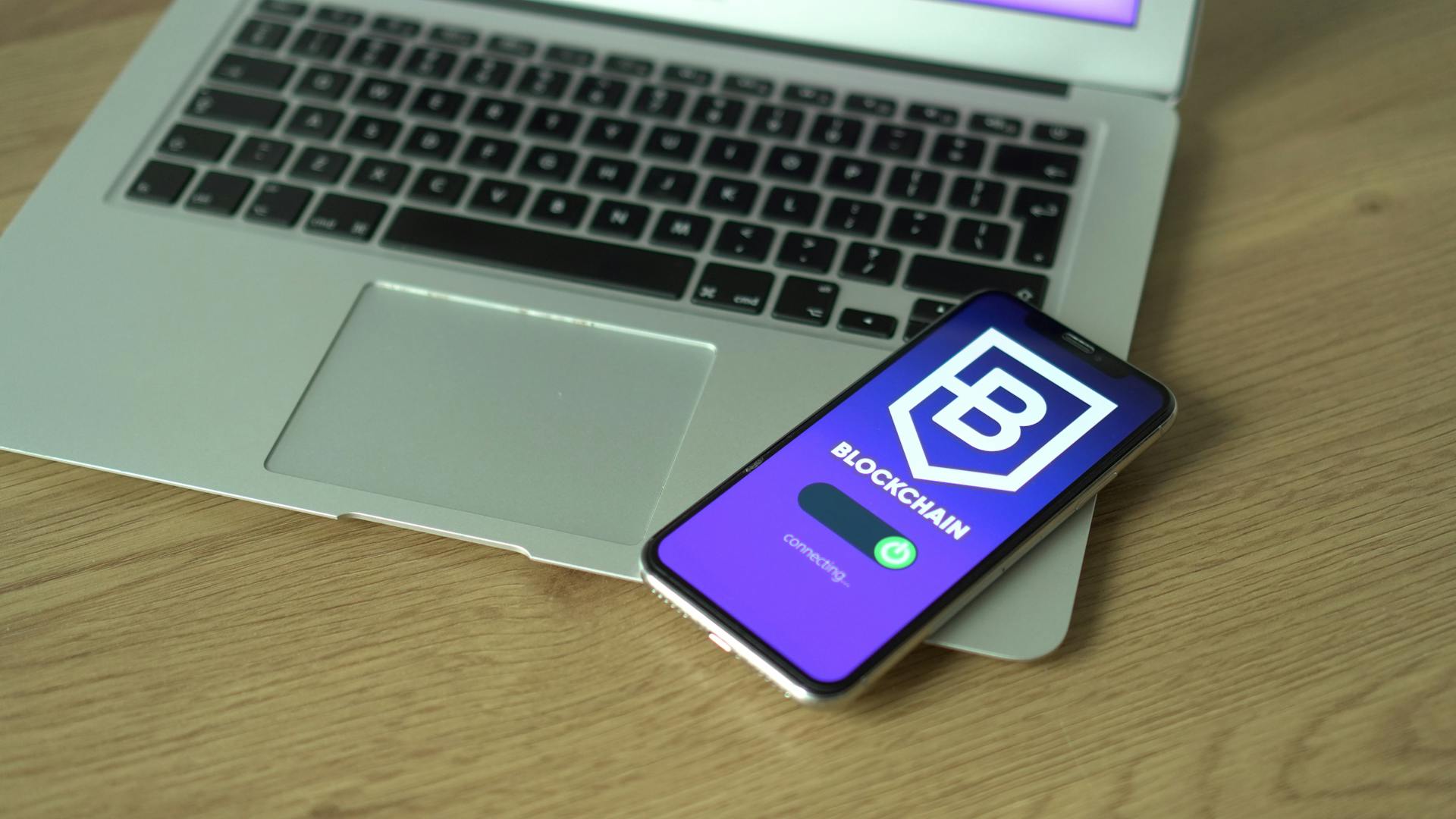
ERC20 and TRC20 are two popular token standards used for creating and managing digital assets on blockchain networks. ERC20 is the original standard, developed for the Ethereum network, while TRC20 is specifically designed for the TRON network.
ERC20 tokens can be easily transferred between wallets and exchanges, thanks to its open-source nature and wide adoption.
The TRC20 standard, on the other hand, is designed to be more energy-efficient and faster than ERC20, with the ability to process up to 2,000 transactions per second on the TRON network.
Expand your knowledge: Bitcoin Atm Milwaukee - Coinhub
What Is ERC-20?
ERC-20 is a technical standard for creating and issuing smart contracts on the Ethereum blockchain for token deployment. It's a set of rules that all ERC-20 tokens must follow, ensuring uniformity and compatibility across tokens and smart contracts.
ERC-20 tokens utilize the capabilities of the Ethereum Virtual Machine (EVM), allowing for a wide range of functionalities, including token transfers, approvals, and access to token balances. This is why ERC-20 tokens are so versatile and can be used in various applications.
A fresh viewpoint: Bitcoin Atm Tampa - Coinhub
The ERC-20 standard includes a standard list of rules and functions, such as transfer, total supply, balance, etc., that all ERC-20 tokens must implement. This ensures that ERC-20 tokens can be exchanged and interacted with consistently across services and wallets within the Ethereum ecosystem.
Here are some of the key benefits of ERC-20 tokens:
- Broad Acceptance: ERC-20 tokens have widespread adoption, making exchanging them and accessing various Ethereum ecosystem services easy.
- Strong Developer Community: A large and active community supports the development and innovation of ERC-20 tokens and related services.
- Interoperability: ERC-20 tokens can easily interact with other smart contracts and dApps on Ethereum, facilitating complex ecosystems of decentralized services.
- Robust Security: ERC-20 tokens leverage Ethereum’s secure network, protecting against fraud and unauthorized transactions.
- Versatility: ERC-20 tokens support various applications, from simple token swaps to complex decentralized finance (DeFi) products.
However, ERC-20 tokens also have some limitations. They can be affected by higher transaction costs, gas fees on the Ethereum network can be high, especially during periods of network congestion, impacting the cost-effectiveness of transactions involving ERC-20 tokens.
Suggestion: Is Avax Erc 20
What Is Trc-20?
TRC-20 is a token standard designed for deploying smart contracts on the Tron blockchain for token creation. It ensures compatibility within the Tron ecosystem, providing a robust framework for developers to build and manage their tokens.
TRC-20 tokens leverage the full capabilities of the Tron Virtual Machine (TVM) for efficient, secure, and scalable transactions. This standard supports complex smart contract functionalities, including token transfers and interactions with other contracts.
Curious to learn more? Check out: The Bitcoin Standard Goodreads
Network Operations
The TRC20 network operates on the Tron blockchain, offering increased reliability and instant transaction processing. This is a significant advantage over other networks.
The TRC20 network is built on the Tron network, which was initially an Ethereum token. TRON was created on the basis of Ethereum and has since moved to its own separate network.
ERC-20 tokens, on the other hand, are built on the Ethereum (ETH) network, as stated in the network section. This is a key difference between ERC20 and TRC20 tokens.
To make transactions with USDT and other TRC20 tokens, you need to hold TRX in your wallet. This is a requirement of the TRC20 ecosystem.
You can use the following wallets to pay in USDT and store this cryptocurrency on the TRON blockchain:
- TronLink
- MathWallet
- imToken
Each of these wallets offers its own unique features, such as full connectivity with the main blockchain and support for multiple chains.
Token Comparison
USDT (TRC20) is based on the Tron blockchain, while USDT (ERC20) runs on the Ethereum network.
The transaction speed of USDT (TRC20) is faster than USDT (ERC20), and the fees are lower.
For traders, USDT (TRC20) may be a better choice due to its lower fees and faster transaction speeds.
However, Ethereum is more secure and established, making it a better option for those looking for long-term stability.
The TRC20 version of USDT has lesser gas fees, making it excellent for beginning traders.
ERC20 USDT has more versatility than TRC20 USDT regarding how it can be developed and shared.
Transfer and Security
You can transfer USDT between ERC20 and TRC20, allowing for liquidity across the chains and giving users the freedom to transact in their best interests. This means you can move your USDT from Ethereum to TRON and vice-versa.
To securely store your TRC20 and ERC20 tokens, consider using a reliable wallet like Guarda. This multi-cryptocurrency wallet supports 60+ blockchains and over 400k+ tokens, including TRC20 and ERC20 tokens.
You can store your tokens in Guarda Wallet by downloading the app, creating an account, and adding your TRC and ERC-based token wallets. Don't forget to download a TXT backup file for each token you add, as Guarda doesn't store your data.
Transactions on the TRC20 and ERC20 networks are considered secure due to their decentralized and immutable blockchain architecture. TRC20 Tokens are secured by the Tron Virtual Machine, while ERC20 Tokens are secured by the Ethereum Virtual Machine.
You might enjoy: Machine Money
Transfer Options
You can transfer USDT between different networks, and it's actually quite straightforward. Yes, you can transfer USDT from Ethereum to TRON and vice-versa.
This creates liquidity across the chains, allowing users to transact in their best interests. It's a great way to move your USDT around and make the most of your digital assets.
You can sell USDT from any network on websites that support the token, giving you even more flexibility. Just make sure the website is reputable and secure.
You might like: How to Transfer from Crypto Wallet to Fiat Wallet
Transactions Security
Transactions on TRC20 and ERC20 tokens are secured by their respective virtual machines, the Tron Virtual Machine and the Ethereum Virtual Machine. These secure environments ensure that transactions are valid and secure.
The Tron Virtual Machine, built on Tron's blockchain network, secures TRC20 tokens. The Ethereum Virtual Machine, a secure platform, secures ERC20 tokens.
Decentralized and immutable blockchain technology underlies both TRC20 and ERC20 tokens, making them secure. This means that transactions cannot be altered or deleted once they are made.
The Ethereum Virtual Machine ensures that all transactions on the Ethereum Network are valid and secure.
If this caught your attention, see: Bitcoins Transactions per Second
Cost and Scalability
When it comes to cost, TRC20 tokens are the clear winner. TRC20 tokens generally have lower gas fees than ERC20 tokens since they run on the TRON network, which has lower fees than the Ethereum network.
Transaction costs on the Ethereum network can be high, especially during periods of congestion, making TRC20 tokens a more economical option for frequent transfers.
Broaden your view: Best Erc20 Tokens
TRC20 tokens can process up to 2000 transactions per second, while ERC20 tokens can only process 15 transactions per second. This makes TRC20 tokens much more scalable than ERC20 tokens.
Transaction speeds are also significantly faster for TRC20 tokens, taking less than 3 minutes to execute, compared to 15 minutes for ERC20 tokens.
Intriguing read: Crypto Mining Earnings per Day
Wallets That Support
If you're considering storing your TRC20 or ERC20 tokens, you'll want to use a wallet that supports both. Many wallets do, including Guarda, Ledger, and Trust Wallets.
You can store TRC20 and ERC20 tokens in a reliable wallet like Guarda, which supports over 400k+ tokens, including TRC20 and ERC20 tokens.
Some popular wallets that support both TRC20 and ERC20 tokens include:
USDT is a token existing on both the Tron and Ethereum networks, classified under TRC20 and ERC20 respectively.
Tether Network
The Tether Network is a key player in the cryptocurrency world, with two main variations: TRC-20 and ERC-20.
TRC-20 is a type of tether network, specifically designed for the TRON blockchain.
ERC-20, on the other hand, is a standard for tokens on the Ethereum blockchain.
To understand the differences between TRC-20 and ERC-20, let's take a look at the factors that set them apart.
Worth a look: Usdt Ethereum Tether Usd
Conclusion: Understanding Easily
Knowing the differences between TRC-20 and ERC-20 Tether tokens is key for smart choices in your crypto transactions.
TRC-20 brings speed and lower costs on the Tron network, which is a significant advantage for those who need fast transactions.
ERC-20, on the other hand, is known for strong security, a feature that's essential for protecting your assets.
Understanding the unique strengths of each token can help you make informed decisions about which one to use for your transactions.
Frequently Asked Questions
Which network is best for USDT?
The best network for USDT depends on your priorities: Ethereum offers security, Tron provides low fees and fast processing, and BNB Chain offers affordable fees and rapid confirmations. Consider your needs to choose the most suitable option.
Can I send TRC20 to ERC-20?
To send TRC20 to ERC-20, you'll need to bridge the two blockchains through a conversion process. Learn how to do it safely and efficiently on our website.
Sources
- https://cryptocloud.plus/en/blog/differences-between-tether-formats
- https://breetapp.com/blog/tether-usdt-trc-20-vs-erc-20-differences-between-tether-networks
- https://swissmoney.com/usdt-trc20-vs-erc20/
- https://prestmit.io/blog/the-differences-between-trc20-and-erc20-usdt
- https://guarda.com/academy/blockchain/what-are-the-differences-between-trc20-and-erc20/
Featured Images: pexels.com


